After consulting with hundreds of farmers, butchers, and seafood wholesalers across North America, we’ve learned a ton. But one thing has been a constant: selling perishable food online is undeniably different from other forms of e-commerce.
Unfortunately, large incumbent e-commerce platforms — whether it’s Shopify, Magneto, or WooCommerce — aren’t ideal for the realities of selling perishable foods. Whether it’s variable weights, customized delivery zones, or time-saving workflow tools, partnering with the right e-commerce partner can save food suppliers thousands of dollars per year.
Whether you’re a small-scale farmer looking at launching online for the first time or you’re a wholesaler with thousands of orders per month, below are seven questions you should be asking before choosing an e-commerce partner.
1. Does the platform handle variable weights?
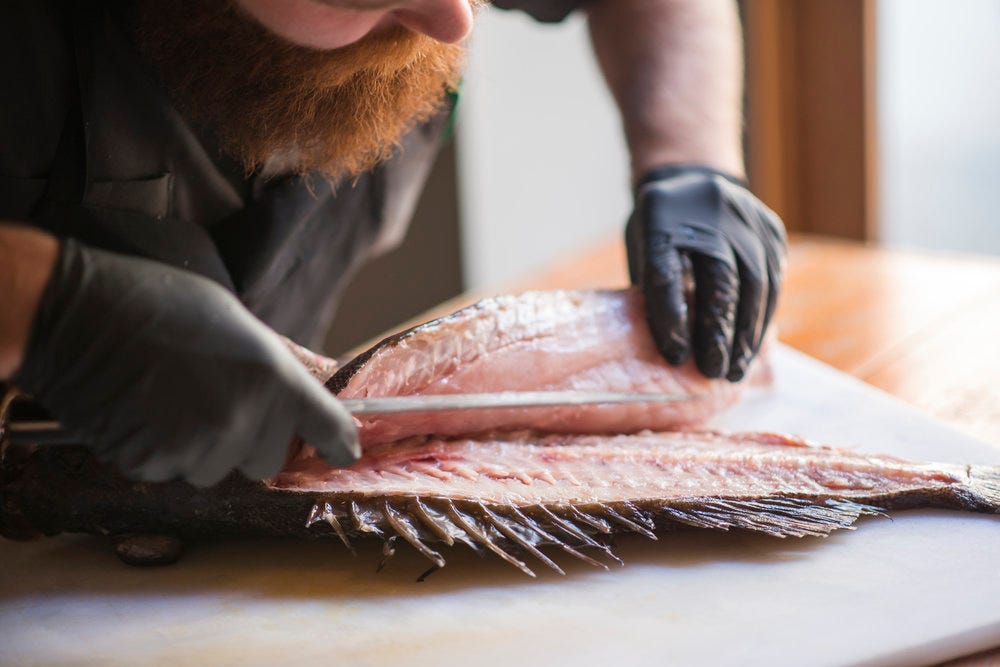
For food suppliers, it’s often a necessity to be able to sell both fixed weight and variable weight items. The last thing you want is to deal with is frustrated customers that have been overcharged, or have to deal with manual refunds for weight adjustments.
This is especially relevant for highly variable (e.g. whole turkey) or highly priced items (e.g. wagyu beef), where even a 0.1lb variance could lead to thousands of dollars of unaccounted losses or overcharges per week.
Today, customers expect suppliers’ online experiences to reflect what they’d find through a comparable, physical transaction — such as shopping at a butcher shop or a chef ordering seafood at their restaurant.
At the end of the day, suppliers should aim for a platform with:
- Flexible, customizable catch weight functionality
- Ability to pre-authorize customers but not charge until weights are finalized
- Easy ways to bulk adjust order items with correct weights
2. Does the platform streamline my backend workflow?
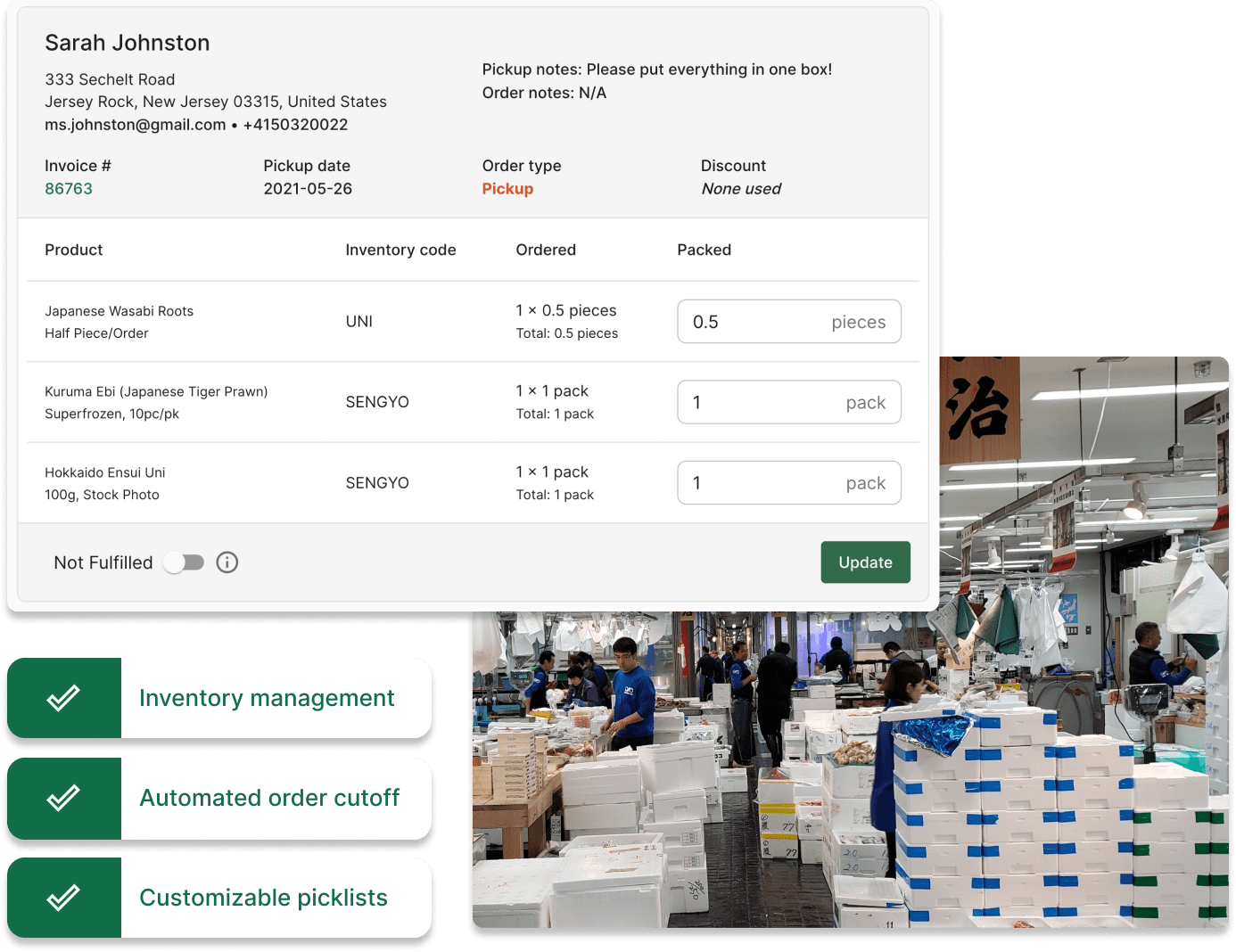
Food suppliers often have specialized workflows that are different from a business selling clothing or electronics online. Unfortunately, the majority of e-commerce platforms have generalized (or even worse, no) backend tools to simplify or automate fulfillment.
Why is this important? Well, the last thing food suppliers want to do is to spend hours tagging orders, organizing packing sheets, or mapping out delivery routes and dates. In fact, this hurdle often dissuades suppliers from launching online stores in the first place.
Luckily, platforms like Freshline have built-in automations and tools that are specialized for food suppliers. This includes tools like:
- One-click ability to seamlessly print invoices for a given day
- Automated picking, cutting, or packing sheets
- Intelligent filtering of orders or products by delivery zone or pickup location
- Automated notifications to customers on order or item weight changes
3. Can I create delivery zones or pickup locations?
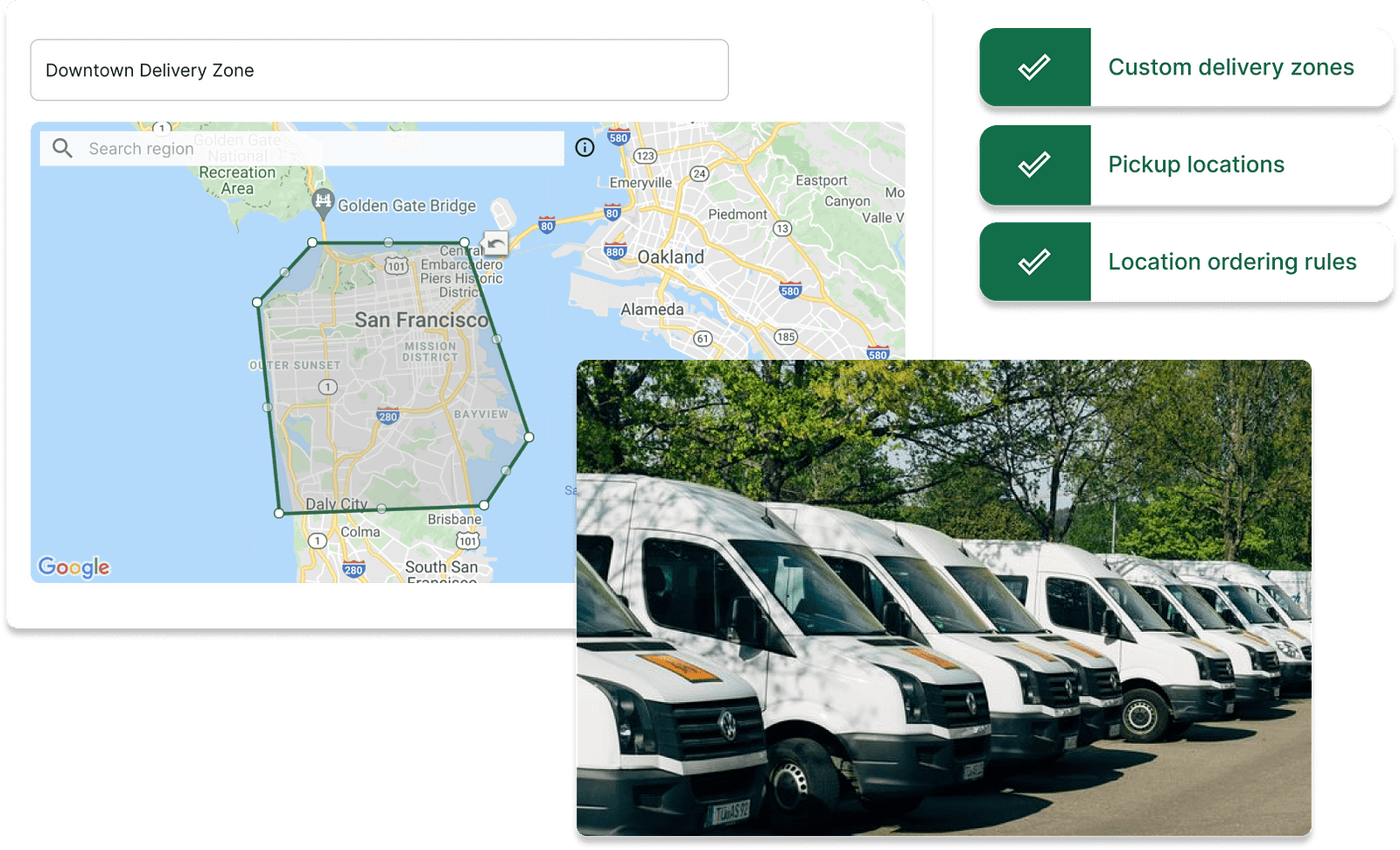
More and more consumers want to support local, but with the convenience of fast, low cost shipping. But when you look at the incumbent e-commerce ecosystem, most are built with carrier-shipping (i.e. FedEx, UPS) in mind — lacking critical functionality like choosing delivery dates, order lead times, cutoff times, or delivery zones.
While users can hire a software developer or download a collection of apps to achieve similar results, they’re often costly, not intuitive, or clash with the underlying platform.
In an increasingly competitive online landscape, the last thing suppliers want to do is to prevent checking out or confuse customers with incorrect service dates or product availability. That’s why it’s import to partner with an e-commerce platform that has:
- Customizable delivery zones — by street, region, or postal code
- Built in functionality for local home deliveries, curbside/store pickup, or carrier-shipping
- Ability to customize delivery fees, minimums, and dates by location
- Control availability of products based on location
4. What are the hidden costs prior to launch?
Online store can often have hidden, unforeseen costs that add up quickly. This includes having to hire a designer to set up your store, subscribing to apps to fill in platform gaps, or paying transaction fees for not using a preferred payment provider.
The unique, specialized ways food suppliers operate often necessitates a patchwork of costly apps that put a dent in your wallet.
For example, simply adding two or three apps can suddenly add $1000+ to your yearly e-commerce spend, while hiring a developer can cost tens of thousands of dollars.
Jot down all of the features you need (across both front and back end), and target an all-in-one platform that can achieve what you need without additional fees or apps.
5. Can I customize the look, feel, and design of my store?
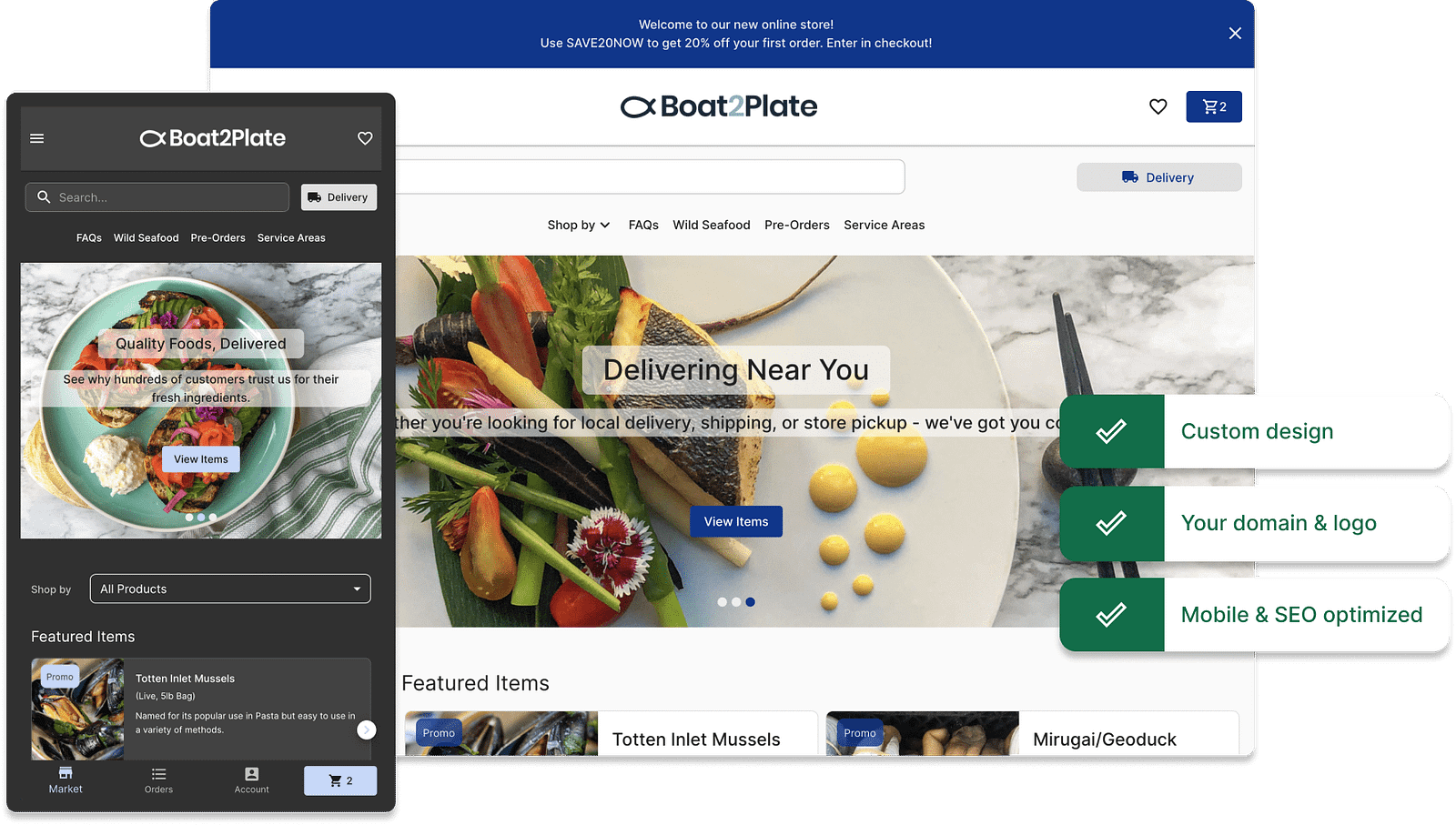
This is an important one.
On one side, you have highly customizable platforms that have every customization option under the sun — often at a steep learning curve and well beyond what food suppliers need.
On the other spectrum, you have several food-specific platforms that force suppliers to build a generic store with little to no design. Worse yet, there are platforms that force suppliers to sell under the e-commerce provider’s brand and design — which does little to build your brand or customer loyalty.
There are platforms that offer a mix of both — modular, mix-and-match design elements that allow you to build a unique brand, design— under your own brand and domain, without the complications of coding.
Choose a platform that puts your design, brand, and identity at the forefront. This will help you build customer loyalty, SEO (search engine optimization), and help you stand out in a crowded marketplace.
6. Can I run set up online orders for my wholesale or restaurant customers?
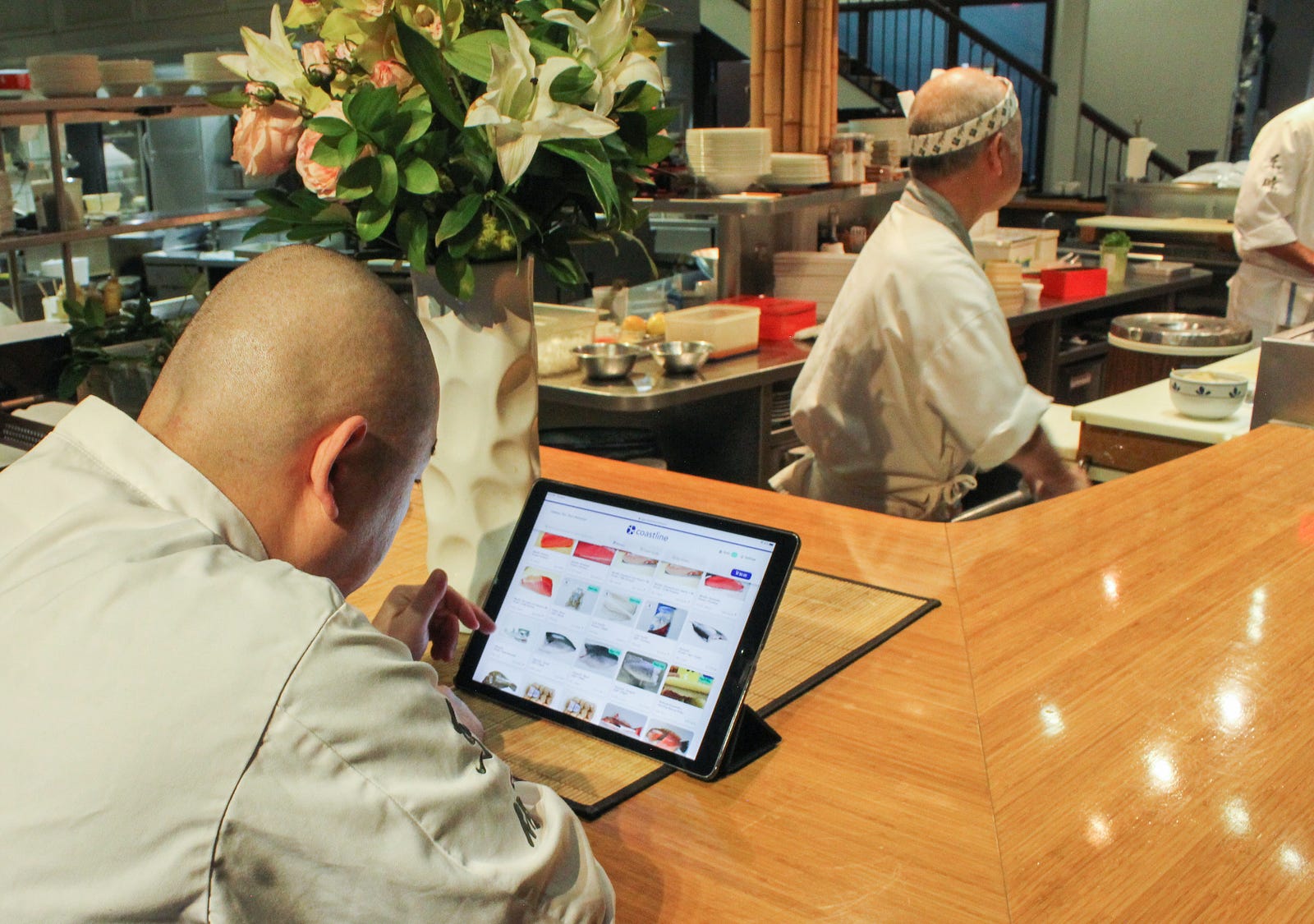
B2B (Business to Business) e-commerce is the fastest growing segment of online commerce. Setting up a wholesale store can be a game changer for food wholesalers, bringing forth benefits like:
- Freeing up time to manage more accounts per sales rep
- Eliminating time consuming data entry and reducing human errors
- Enforcing delivery minimums, time cutoffs, or lead times automatically
- Saving customers time by allowing flexible ordering
- Syncing availability, inventory, and picking/packing across direct-to-consumer and wholesale stores
While platforms like Shopify Plus have a sophisticated B2B ordering system, it’s a costly one — with a 4–5 month implementation timeline and monthly fees that start at $2k. Not to mention it’s not specialized for chef ordering.
While B2B ordering (especially in perishables) is a relatively new space, it’s a fast growing one. At Freshline, we’re building the most efficient, highly specialized ingredient ordering platform. Request beta access by clicking here 🙌🏽.
7. What does the setup and launch process look like?
Most e-commerce platforms are a fully self-serve tool — expecting suppliers to figure everything out on their own. Alternatively, some platforms offer personal setup and support, but charge high setup fees (i.e. a one-time $300 fee) to lock users in.
Work with an e-commerce platform that aims to earn your trust — without charging for support, setup, or migrations. At Freshline, our aim is to not be just a tool, but your technology partner from start to scale.
Whether it’s a personal founder-led walkthrough, a full product and customer migration from another vendor, or just marketing advice — Freshline support is always available and always free.
Hopefully these questions can help suppliers make informed decisions on their ideal e-commerce platform. Launching or moving an online store can be a daunting, complicated process — but it doesn’t always have to be this way.
If you’re curious on learning more about existing e-commerce landscape or want to learn more about Freshline, I’m always eager to chat with folks in the food industry.
Feel free to give me a shout anytime at joseph[at]freshline.io!
Joseph Lee, Co-founder, Freshline 🐟




